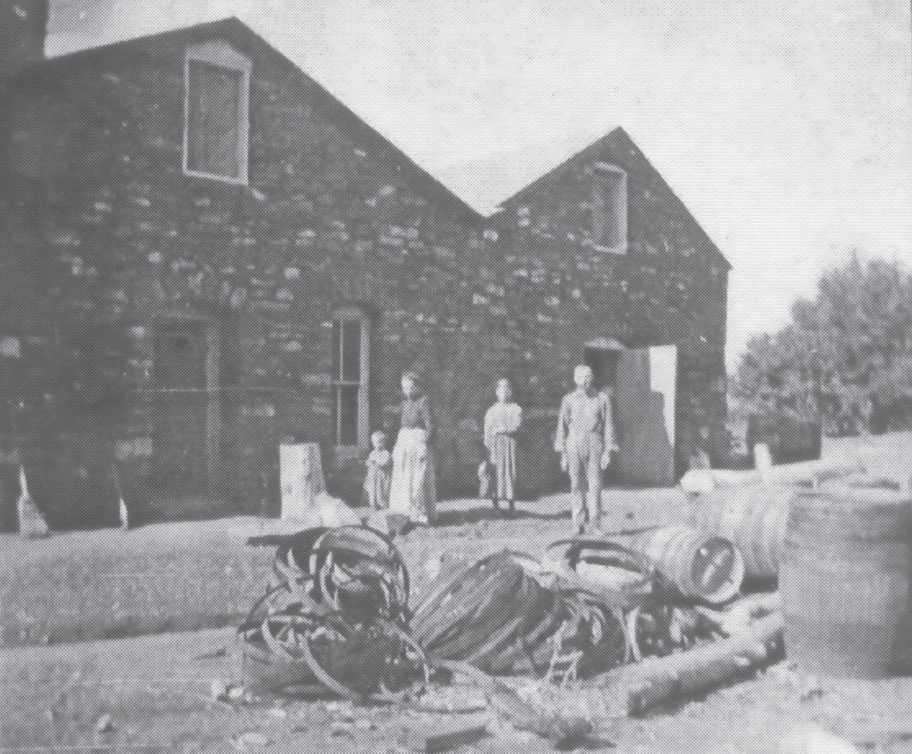Henry Schuerman's Great Notion
The notion that wine grapes would flourish in Arizona's Verde Valley was 300 years old when Henry Schuerman planted his vineyard in the 1880's.
It's doubtful he had read the journals of Diego Perez de Luxan, who, in chronicling Antonio Espejo's 1583 journey to the Valley, noted the abundance of wild grapevines. Nor is it likely that he was privy to the journals of William Abraham Bell or Dr. Edwin Palmer, both of whom made similar observations about the time Schuerman arrived in Arizona
A draft dodger avoiding the Kaiser's army, Schuerman had made his way via Canada to Arizona during its earliest days, where he opened the first hotel in the newly created territorial capital of Prescott.
He was not, nor had he ever been, a farmer.
Nevertheless, during the course of business in Prescott, he met Tom Carroll, a farmer homesteading 160 acres on the banks of Oak Creek beneath Sedona's red rocks. In 1882, Schuerman lent Carroll $800 for improvements. Two years later, Carroll defaulted, and Schuerman, much to his chagrin, became a farmer.
His original intent was to spruce the place up and flip it for a profit. But his attempts to sell it failed. Then, he learned that a mistake had been made in the survey. He was forced to buy the property once more, this time from the railroad, for an additional $400.
He eventually planted an orchard that included apples, peaches, apricots, pears and quinces. And in recognition of his Teutonic roots, he planted a vineyard. According to a document on file with the Sedona Historical Society, he planted Zinfandel grapes–76 acres to be exact.
Then somehow, sometime, for some reason, Schuerman's plans changed. Perhaps it was the mysterious lure of the red rocks. Or maybe it was a newfound prosperity brought on by Sedona's growing reputation for producing quality fruit. But more than likely it was Henry's Zin.
For 25 years, the SchuermanWinery quenched the thirst of Jerome's miners by the barrel and Northern Arizona's cowboys and loggers by the bottle.
Henry and his growing family could not have been happier. Then came New Year's Day 1915, when, by popular vote, the citizens of the infant state of Arizona instituted a total ban on alcohol.
It was a notion Henry Schuerman never understood. But exactly how active a winemaker he remained is unknown. In May 1917, when Clarkdale police stopped Nola Dixon and H. F. Thayer's sedan containing two 50-gallon barrels of Henry's wine, the Prescott Journal Miner reported that Schuerman was still growing "a large amount of grapes." The same paper would later report that the two barrels in question were the last of his pre-prohibition vintage.
On August 31, Dixon and Thayer were sentenced to 30 days and $100 each. Schuerman got six months and a $300 fine.
It should be noted that Henry was well respected, having shared his good fortune with his neighbors on several occasions and having helped to build the community's first schoolhouse.
It wasn't long before his friends and neighbors lined up behind him. Hundreds of signatures were collected. Personal visits were paid to Governor Thomas Campbell. On December 12, 10 days before the state's first Republican governor left office following a recount of votes, Schuerman went free.
But his life would never be the same. Unfit for table grapes, his prize vineyard went fallow. Then Oak Creek changed course, eating away at the Schuerman's property. In 1920, shortly after a flood swept away all that was left, including the red rock sandstone winery, Henry Schuerman died.
It would be another 75 years before someone tested Henry's notion once again.





